Imagine reducing your risk of heart disease by nearly 40%—just by practicing martial arts. That’s not fantasy; that’s science. Traditional martial arts benefits reach far beyond combat—they shape your physical health, mental focus, and personal growth. Whether you’re a student, a parent, or a professional searching for balance, these ancient practices remain relevant and powerful today. If you want lifelong wellness, enhanced confidence, and a robust sense of community, read on—martial arts might be your answer.
Unlocking Traditional Martial Arts Benefits: Surprising Statistics & Enduring Appeal
In our fast-paced, technology-driven world, the enduring appeal of traditional martial arts benefits speaks volumes. From boosting cardiovascular health to promoting discipline and resilience, studies reveal that those who embrace martial art training cut their risk of heart disease by 40% compared to leads a sedentary life. These statistics open our eyes to how the benefits of martial arts extend well past self-defense—they’re a prescription for lifelong health and personal growth.
Practicing martial arts is more than just learning kicks and punches; it’s about cultivating a disciplined, balanced life. Did you know that martial artists demonstrate higher levels of focus and lower stress—a reflection of both physical and mental benefits? Across the United States, schools of kung fu, muay thai, and brazilian jiu jitsu are seeing increased enrollment as people look to martial arts for more than just physical training—they seek a path of wellness, confidence, and community connection.
Today, a wide spectrum of martial arts training options exist—from heritage-focused dojos to modern studios—allowing everyone to access these traditional martial arts benefits. The statistics are clear: from cardiovascular improvement to emotional resilience, martial arts are transforming people’s lives at every age and ability.
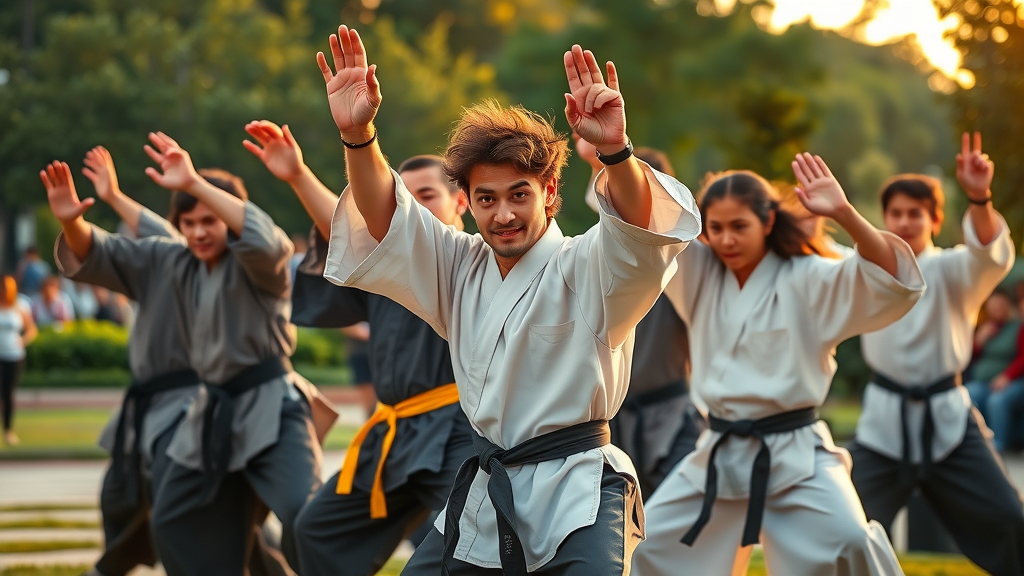
- Did you know that practitioners of martial arts reduce their risk of heart disease by nearly 40% compared to sedentary individuals? Explore how embracing traditional martial arts can dramatically enhance well-being.
Understanding Traditional Martial Arts Benefits for the Modern Martial Artist
The conversation surrounding traditional martial arts benefits is richer than ever as modern practitioners blend ancient heritage with innovation. Classes worldwide interweave classic forms like kung fu , muay thai , and brazilian jiu jitsu with new training techniques. This fusion ensures that the powerful physical and mental benefits of martial arts continue to evolve, staying relevant for today’s martial artist.
Consider how combat sports such as muay thai empower self-defense while kung fu instills discipline and balance. Brazilian jiu jitsu’s focus on leverage and ground defense makes it a practical choice for many, especially as mixed martial arts combine these traditions. The benefits of martial arts, however, are not found only in athletic achievement or competition—they’re rooted in the lifelong cultivation of character, discipline, and unity that traditional martial arts teach.
Adaptation is key. Modern martial arts training honors lineage, but instructors now emphasize holistic personal growth and community building. By integrating legacy styles and new methodologies, martial arts schools ensure every student—child, teen, or adult—discovers the many traditional martial arts benefits that enrich life far beyond the dojo.
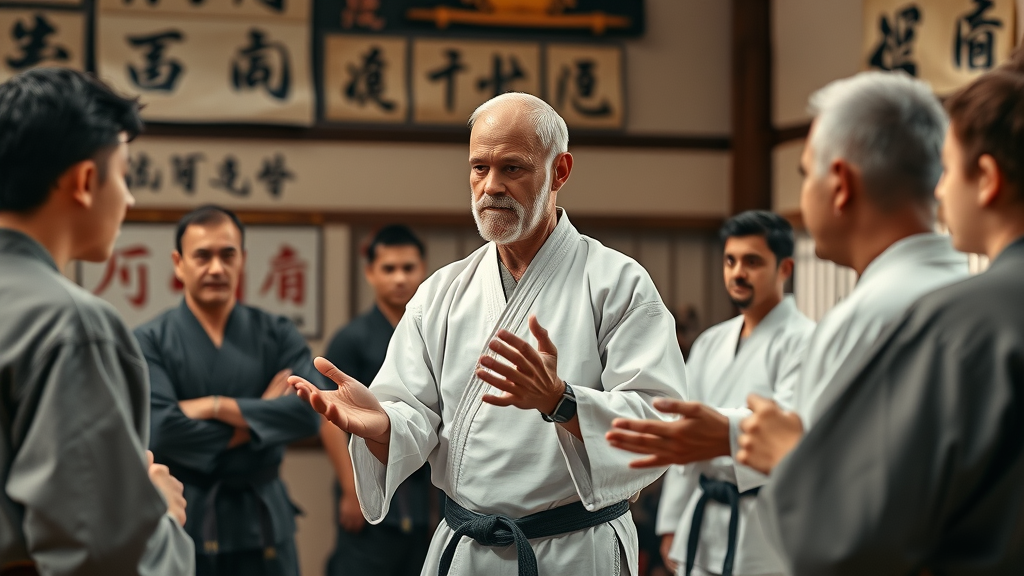
- Examine the blend of heritage and adaptation in martial art forms, such as kung fu, muay thai, and brazilian jiu-jitsu.
“Traditional martial arts provide a complete blueprint for lifelong health, mental focus, and discipline.” – Sensei Gruber
| Aspect | Traditional Martial Arts (Karate, Kung Fu, Tae Kwon Do) | Modern Martial Arts (Krav Maga, Mixed Martial Arts) |
|---|---|---|
| Health | Holistic fitness—flexibility, balance, strength, cardiovascular health | Peak athleticism—strength, endurance, higher injury risk |
| Discipline | Structured learning, focus on personal growth and respect | Goal-oriented, competitive mindset |
| Defense Skills | Principles-based defense and situational awareness | Real-world practicality and adaptability |
| Cultural Values | Deep heritage, rituals, and etiquette | Efficiency and mixed techniques from diverse disciplines |
Physical Health: Traditional Martial Arts Benefits Beyond Fitness
When most people think of traditional martial arts benefits , fitness and self-defense spring to mind. Yet, the connection between practicing martial arts and physical health runs much deeper. Scientific research shows consistent martial arts training leads to improved cardiovascular health, decreased blood pressure, enhanced flexibility, and increased muscular strength. Unlike some combat sports focused solely on competition, many traditional practices embrace gentle warm-ups, holistic body movements, and endurance training that are accessible and safe for people of all ages.
Physical benefits aren’t restricted to the young or athletic. Seniors, children, and all demographics can experience better balance, coordination, and increased bone density through martial arts training. Traditional martial arts such as karate or kung fu often utilize routines—including kicks and punches—that promote joint mobility and cardiovascular health. These beneficial effects often translate into easier movement and greater energy levels in everyday life, advancing wellness far beyond the dojo.
Whether your focus is internal (mental discipline and focus) or external (muscle tone and stamina), the benefits of martial arts are holistic, proving that a commitment to martial arts training improves both human performance and quality of life.
How Martial Arts Training Lowers Blood Pressure and Boosts Cardiovascular Health
Martial arts training is a powerful ally in managing blood pressure and boosting cardiovascular health. Multiple studies show that adults who participate in traditional martial arts—whether it’s muay thai, kung fu, or tae kwon do—experience significant reductions in blood pressure levels over time. Dynamic exercises, controlled forms, and rigorous practice sessions act as both aerobic and anaerobic workouts, strengthening the heart and increasing circulation.
These improvements aren’t theoretical. Practicing martial arts provides measurable benefits, including lower resting heart rates and improved cholesterol profiles. The expert-driven routines, which include aerobic movements and strength-building poses, are designed to maximize cardiovascular output while fostering mental discipline. The result? Martial artists not only experience greater stamina but also benefit from a lower risk of heart attack, stroke, and chronic illness.
- Scientific evidence connects martial arts training to lower blood pressure and healthier hearts, making it a critical intervention for holistic wellness.
Enhancing Flexibility, Strength, and Endurance Through Traditional Martial Arts
Traditional martial arts are renowned for enhancing flexibility, overall strength, and enduring stamina. In forms like kung fu and muay thai, practitioners follow specific routines blending dynamic stretching, high-impact strikes, and repetitive footwork. These movements not only build muscle but also lubricate joints, improve balance, and increase overall athletic performance. The repetitive motion in a well-designed martial arts training session builds muscle memory and functional strength—valuable in both martial art performance and daily activities.
Endurance is another primary benefit. Martial artists often run through grueling drills and extended forms that train the body to perform for longer periods. Extensive research shows that athletes with a martial arts background have superior agility and cardiovascular performance when compared with those in other sports. Whether performing flowing kung fu katas or intensive muay thai pad work, students experience incremental gains in flexibility and robust health.
- Direct examples from practicing martial arts, including kung fu and muay thai routines, reveal dramatic improvements in flexibility and core strength.
Mental Discipline and Self-Control: Core Traditional Martial Arts Benefits
Beyond the visible, the most profound traditional martial arts benefits might be the cultivation of mental discipline and self-control. Martial arts teach more than physical prowess; they develop the inner resilience necessary to face life’s challenges. Instructors guide students through meditative exercises, breath control, and precise choreography, teaching how to channel focus and remain calm—on or off the mat.
The arts teach a structured approach to mastery. Whether it’s a white belt learning kata or a black belt refining their technique, martial arts training emphasizes patience, persistence, and incremental progress. These values, embedded in tradition, build self-worth and resilience, traits that endure long after the uniform is hung up.
By integrating mindfulness with movement, martial arts schools equip students to overcome adversity, develop self-control, and create mental clarity. The benefits of martial arts are, therefore, as much about building a strong mind as developing a fit body.
Arts Teach Focus: Nurturing Resilience in the Martial Artist
Martial arts teach unparalleled focus. Meditation, repetition, and detailed choreography are the foundations for every martial artist, no matter the style. These practices teach students to channel attention, stay present, and bounce back from distractions. For children, this means improved performance in school. For adults, it translates into higher workplace productivity and stress resilience.
Martial arts training introduces mindfulness early. Students start class with moments of reflection, learning how to calm their bodies and regulate their thoughts. Through countless repetitions—perfecting forms or mastering techniques—martial artists learn the value of perseverance and the discipline required to achieve any goal. This structured learning environment fosters not only technical skill but also the mental control needed for all areas of life.
- How martial artists use meditation, repetition, and choreography to channel discipline and nurture lifelong resilience.
Emotional Stability: Managing Stress with Martial Arts Training
It’s no surprise that martial arts training provides a natural pathway for coping with stress and anxiety. Numerous studies and personal testimonies document how regular practice decreases anxiety and elevates mental clarity . The repetitive nature of forms, the cathartic release of energy during sparring, and the focus on breath work all contribute to emotional balance and stability.
Martial artists regularly report improved mood, lower incidences of depression, and a greater sense of control in everyday life. For many, stepping onto the mat is an escape that refocuses the mind and transforms stress into power. Parents also note remarkable behavioral improvements in children who engage in martial arts—testament to how the mental discipline learned ties in with character growth.
- Testimonies and research consistently show martial arts benefits for anxiety, stress relief, and increased mental clarity.
Defense Skills and Confidence: Real-Life Applications of Traditional Martial Arts Benefits
Defense skills and newfound confidence are among the most practical traditional martial arts benefits. From self-assurance when walking alone to the ability to de-escalate tense situations, martial artists are well-equipped for life’s unpredictable challenges. Learning martial arts is not about seeking confrontation but mastering personal boundaries and self-protection strategies that translate directly to everyday situations.
Unlike some mixed martial arts or modern approaches that focus on sport or rapid efficacy, traditional martial arts emphasize structured progression, situational awareness, and respect. These elements cultivate not only the skills needed to protect oneself but also a nonviolent mindset that seeks peaceful outcomes whenever possible. Students gain more than physical ability—they develop a measured, assertive confidence that radiates into all areas of life.
Traditional martial arts empower both children and adults with real-world tools for safety and assertiveness, making the journey as valuable as the knowledge itself.
Practical Defense Skills: Why Learn Martial Arts?
Why learn martial arts? The answer lies in practical defense skills that can make a vital difference. A well-trained martial artist can assess threats, react swiftly, and neutralize potential harm without unnecessary violence. These skills, learned through diligent practice of forms and scenarios, build readiness for the unpredictable events of daily life.
Broadened abilities in personal protection mean being prepared for much more than just physical threats. Martial arts teach situational awareness, confidence in body language, and a clear mind even in stressful situations. Whether preventing bullying, navigating crowded environments, or facing emergencies, defense skills ingrained in training transfer directly to the outside world, reducing anxiety and increasing security.
- Broadened abilities in personal protection—defense skills that transfer to real-world scenarios and everyday safety.
Boosting Confidence and Leadership Through Martial Arts Training
Self-confidence is a trademark benefit among martial artists. Through rigorous arts training, students of all ages set and achieve goals—progressing from simple movements to advanced techniques. Earning new belts or mastering complex routines imbues a sense of accomplishment, which in turn builds the confidence needed for leadership both inside and outside the dojo.
Firsthand accounts from martial artists routinely highlight increased self-esteem and leadership skills. Children who start shy become assertive and socially adept. Adults often find new purpose, greater assertiveness, and the ability to inspire those around them. The benefits of martial arts extend to teamwork and empathy—students encourage peers, lead by example, and learn to handle both success and failure with poise.
- Firsthand accounts from martial artists describe confidence and leadership skills gained via traditional martial arts training.
Cultural Richness: What Sets Traditional Martial Arts Apart
Traditional martial arts stand apart not only because of the physical and mental benefits they impart but also because of their profound cultural richness . Each martial art—be it karate, kung fu, or tae kwon do—carries a legacy of rituals, philosophy, and values meticulously passed down through generations. These traditions infuse the training room with deep purpose, reminding each practitioner that martial arts are as much about character and respect as they are about technique.
The symbolism of colored belts, ceremonial bows, and community gatherings creates a sense of belonging. Martial artists celebrate festivals, honor past masters, and maintain protocols that foster mutual respect. This connection to heritage imparts lessons in humility, discipline, and social responsibility—qualities that go well beyond physical achievement. Through martial arts, individuals not only acquire defense skills but also form lasting bonds within a meaningful and supportive community.
It’s this unique blend of cultural ritual and personal growth that continues to draw people of all backgrounds and ages to practice and preserve traditional martial arts benefits.

Heritage, Ritual, and Community Within Martial Arts
The rituals and customs of traditional martial arts infuse daily training with depth, structure, and a sense of occasion. Practitioners engage in respectful bows, recitation of creeds, and ceremonies marking advancement. These acts aren’t just symbolic—they’re integral to fostering a deep sense of loyalty, respect, and lifelong connection among martial artists.
Distinctive traditions in arts like karate and kung fu include shared meals, commemorative festivals, and community events. These practices unite students, instructors, and families, forming strong support networks that extend beyond the walls of the dojo. The community spirit, rooted in centuries-old custom, is a compelling reason why people return year after year, forging friendships and mentorships that endure a lifetime.
- Distinctive traditions in karate, kung fu, and other arts spotlight the enduring values, respect, and lifelong connections found within traditional martial arts communities.
Comparing Traditional vs. Modern Martial Arts Training
There’s an ongoing debate around the differing approaches of traditional and modern martial arts. While mixed martial arts (MMA) and krav maga focus on immediate, practical defense and competitive efficiency, traditional martial arts prioritize systematic progression, cultural etiquette, and holistic benefits. Both approaches bring value, but the choice often depends on individual goals—pure combat sport or comprehensive personal development.
The philosophical contrasts are stark. Traditional martial arts immerse practitioners in ritual and structured discipline; modern systems like MMA offer hybridized training designed to win. Health results also diverge: traditional programs reduce blood pressure and stress through steady routines, while competitive training risks greater injury but hones peak athletic performance. Ultimately, combining the best from each may offer the broadest range of benefits and growth opportunities.
| Dimension | Traditional Martial Arts | Mixed Martial Arts |
|---|---|---|
| Philosophy | Respect, honor, gradual mastery | Effectiveness, adaptability, quick results |
| Technique | Form-based, sequence, and ritual | Mixed techniques, integration of styles |
| Health & Safety | Steady progress, reduced injury rates | High-intensity, increased competitive injury risk |
People Also Ask: Martial Arts Questions Answered
What are the benefits of martial arts?
- Health: Enhanced cardiovascular fitness, flexibility, and strength.
- Discipline: Improved focus, patience, and self-control.
- Self-defense: Practical defense skills for real-world safety.
- Stress relief: Mindfulness and physical activity reduce anxiety.
- Community support: Belonging to a supportive, value-focused group.
Martial arts improve physical health by keeping the body active and supple, while also instilling discipline and providing an environment for emotional well-being. The structured routines and supportive communities found in martial arts schools help participants navigate challenges, building resilience and lifelong friendships.
What is the most effective traditional martial art?
- Effectiveness depends on personal goals—karate excels in structure and discipline, muay thai in striking, and brazilian jiu-jitsu in ground defense.
Each traditional martial art brings unique strengths. Karate is revered for its discipline and powerful strikes; muay thai is unmatched in close-combat striking and clinch work; brazilian jiu-jitsu specializes in leverage, ground control, and submissions. The right martial art for you depends on your interests, body type, and desired outcomes.
Does martial arts help in real life?
- Yes, martial arts training equips individuals with discipline, calm under pressure, and practical defense skills valuable for everyday life.
Beyond physical prowess, martial arts teach valuable life skills—decision making under stress, conflict resolution, and self-confidence. Whether defending oneself, managing a challenging classroom or workplace, or simply navigating life’s pressures, martial arts prepare practitioners to face adversity calmly and resourcefully.
What is the difference between modern martial arts and traditional martial arts?
- Traditional martial arts emphasize ritual, historical values, and structured progression; modern martial arts often focus on efficiency and mixed techniques from various styles.
Traditional martial arts carry customs and etiquette often missing in modern approaches like MMA and krav maga. While both are effective, traditional programs emphasize personal growth, legacy, and respect, whereas modern training spotlights versatility, speed of learning, and sport competition.
Frequently Asked Questions About Traditional Martial Arts Benefits
- Do martial arts build character? Yes. Martial arts teach perseverance, humility, and responsibility, shaping character through practice and teamwork.
- Can children practice traditional martial arts? Absolutely. Many schools offer age-specific programs, teaching focus, discipline, and physical fitness in a safe environment.
- How does martial arts impact academic performance? Studies indicate improved concentration, self-discipline, and stress management—all critical to school success.
- What martial art is best for seniors? Styles like tai chi and traditional karate offer low-impact routines ideal for balance, joint health, and cardio fitness.
Real Life Stories: How Traditional Martial Arts Benefits Shape Gurnee’s Community
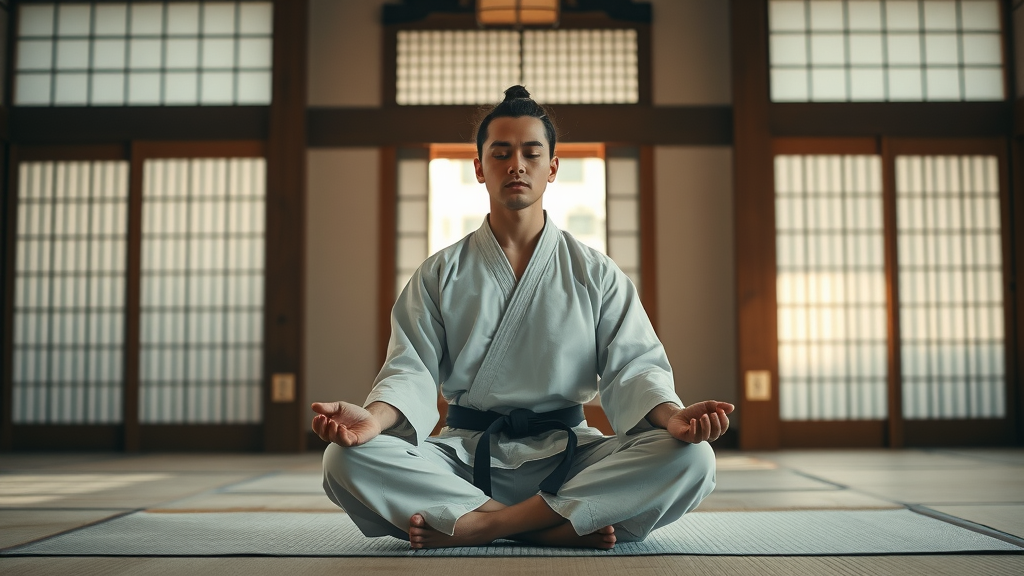
- Personal narratives from Gurnee martial artists—children, adults, and seniors—sharing their health and life improvements.
In Gurnee, traditional martial arts benefits are lived every day. Children gain confidence and focus, excelling in school and social life. Adults report lower stress, improved physical health, and the formation of deep friendships. Seniors find renewed vitality—greater flexibility, sharper minds, and a sense of belonging. These stories, unfolding in dojos and community centers, reflect the lasting, positive impact martial arts training has on individuals and the broader community. As one local practitioner shared: “I never thought a dojo would become my second family—but it did. Martial arts changed my mindset and my life.”
This multi-generational support, inspiration, and commitment to growth makes Gurnee’s martial arts community a beacon of holistic wellness—proof positive that investing in traditional martial arts benefits pays off for everyone.
Key Takeaways: Embracing Traditional Martial Arts Benefits for Lifelong Wellness
- Holistic growth: Traditional martial arts develop health, mind, and character for comprehensive wellness.
- Empowerment for all ages: Children, adults, and seniors benefit from martial arts, each finding new strengths.
- Community and culture: Physical fitness remains vital, but so do the bonds of friendship, respect, and legacy.
Ready to Experience Traditional Martial Arts Benefits?
- Build confidence, discipline, and strength. Enroll NOW at Gruber’s Karate, Gurnee’s 5 Star Rated Trusted Martial Arts Center! Sensei@gruberskarate.com Gruber's Karate 5725 Stearns School Rd Gurnee, IL 60031 (224) 347-6655 GrubersKarate.com
Start your journey today—embrace discipline, boost your health, and join a community rooted in centuries of wisdom.
Traditional martial arts offer a comprehensive approach to enhancing both physical and mental well-being. Engaging in disciplines such as karate, kung fu, or tae kwon do can lead to improved cardiovascular health, increased flexibility, and greater muscular strength. Beyond the physical benefits, practitioners often experience heightened self-confidence, better stress management, and a stronger sense of community. For those interested in a deeper exploration of these advantages, the article “10 Benefits of Learning a Martial Art” provides valuable insights into how martial arts can positively impact various aspects of life. ( genyukandojo.com )
 Add Row
Add Row  Add
Add 

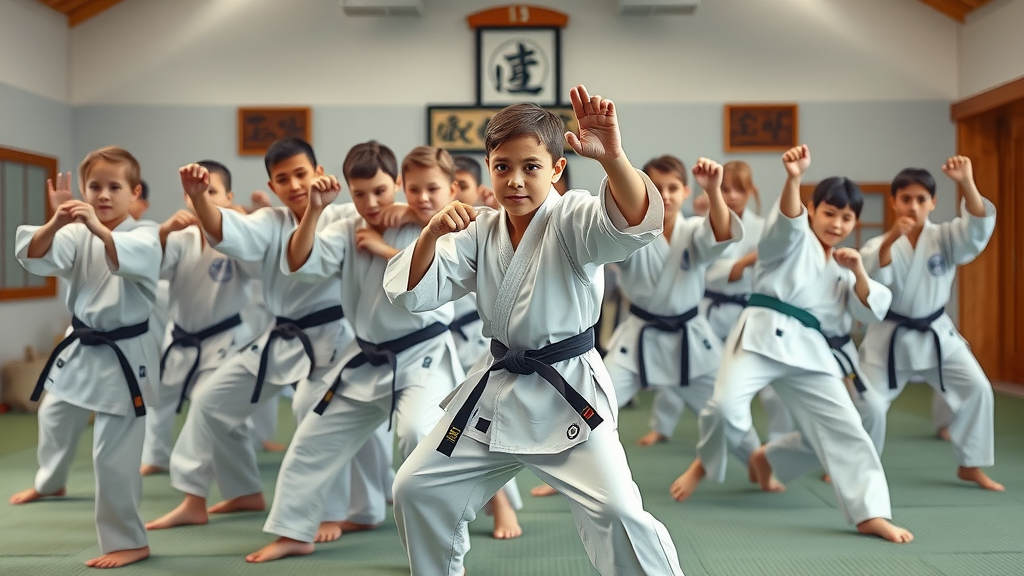
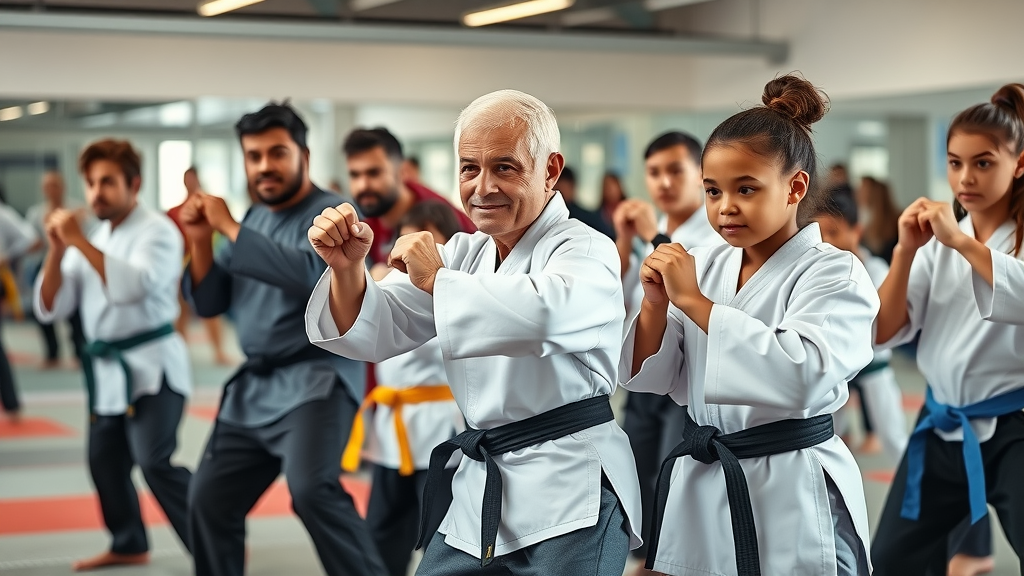
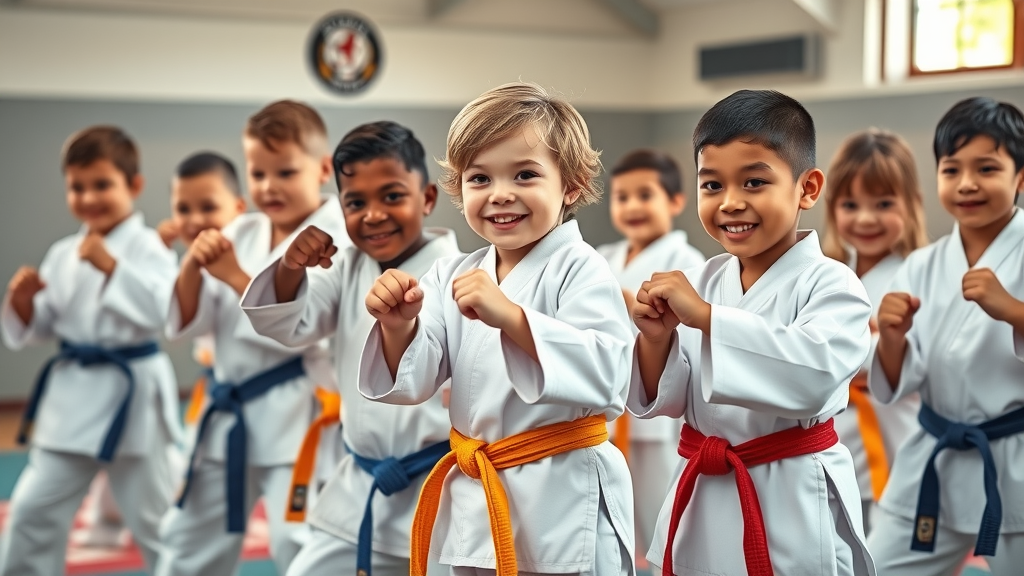
Write A Comment